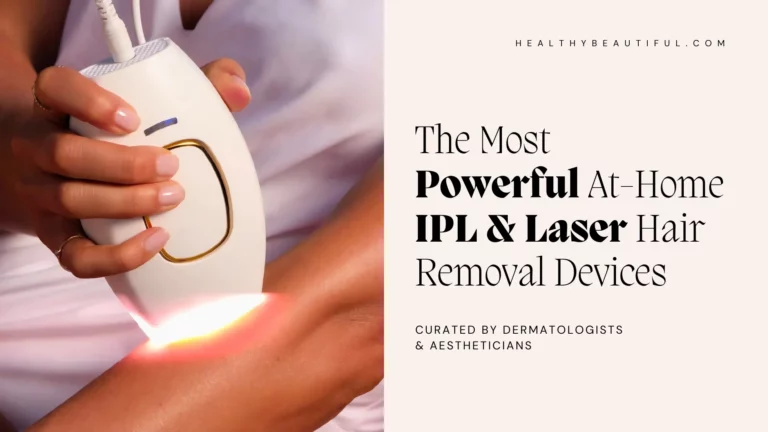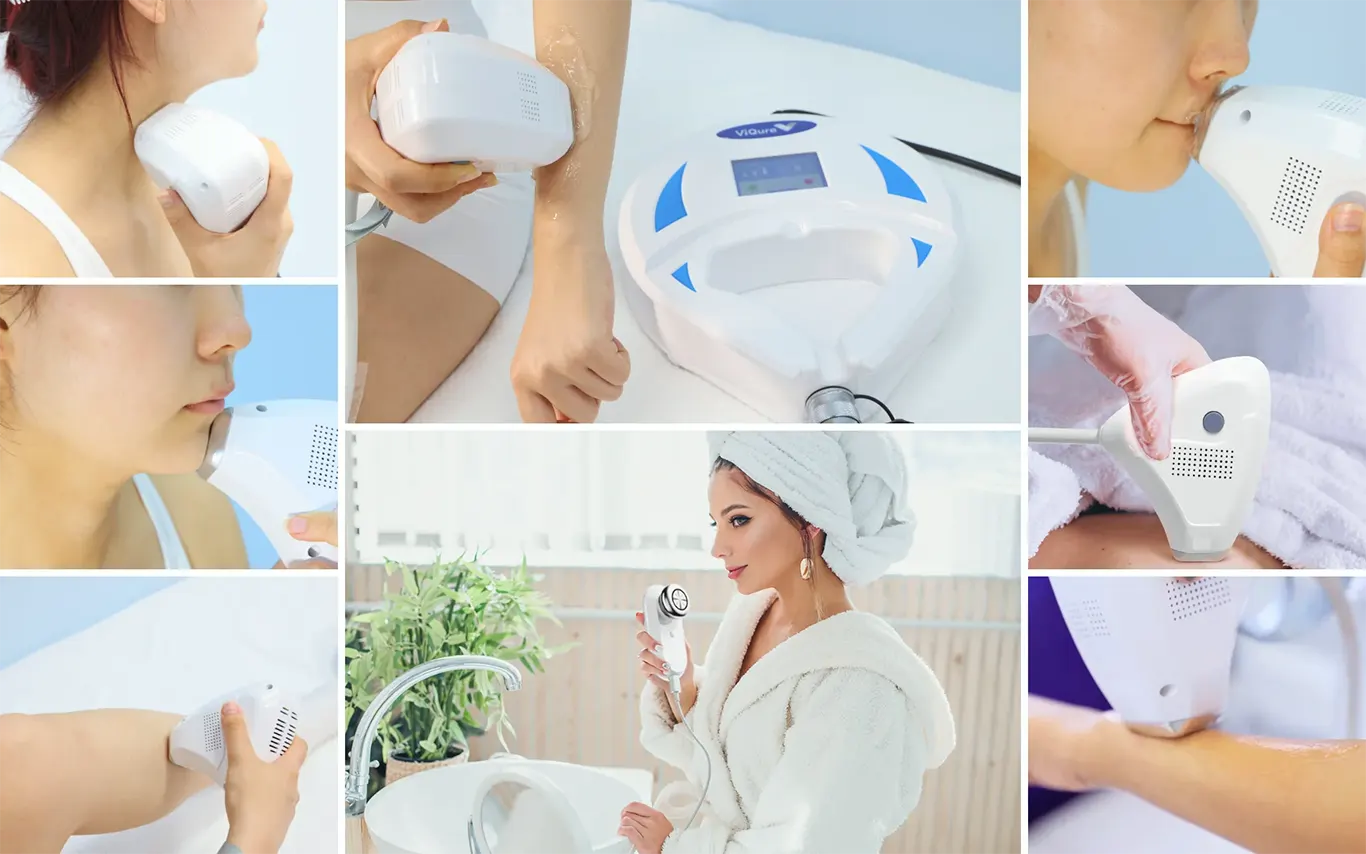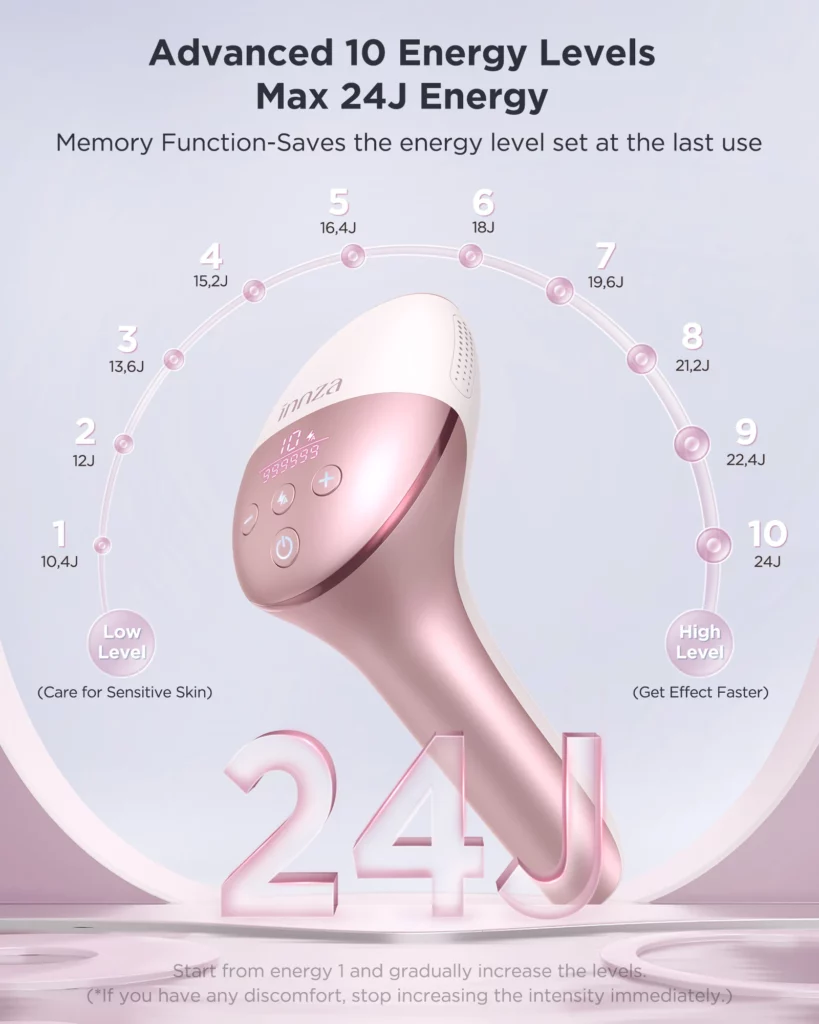
Ask the Expert: Why is power/energy fluence important in laser devices?
BY SAMANTHA WELCH, ESTHETICIAN
Correlation Between IPL/Laser Devices and Energy Fluence
One of the most crucial factors determining the effectiveness of at-home IPL (Intense Pulsed Light) and laser hair removal devices is the energy fluence they deliver.
Energy fluence refers to the amount of energy concentrated in a specific area, measured in joules per square centimeter (J/cm²).
The energy fluence must be high enough to damage the hair follicle and inhibit hair growth, but not so high that it causes unnecessary damage to the surrounding skin.
The right energy fluence for you depends on several factors, including your skin type, hair color, thickness, and the treatment area.
In general, higher energy fluences are suitable for those with lighter skin and darker hair, as this combination allows the light to target the melanin in the hair follicle more effectively.
However, it's also more likely to cause side effects if not used correctly.
For those with darker skin or lighter hair, a lower energy fluence is usually recommended to reduce the risk of side effects.
This is because darker skin contains more melanin, which can absorb light and lead to burns or hyperpigmentation.
Similarly, lighter hair contains less melanin, making it harder for the device to target the follicle.
On the other hand, a device with a lower energy fluence may be safer and more comfortable to use, but it may not be as effective, especially for those with thicker, darker hair or lighter skin.
The key is to strike a balance between delivering sufficient energy to disable the hair follicles while minimizing potential adverse effects.
Most devices come with adjustable energy fluence settings, allowing you to customize your treatment based on your needs. It's crucial to use these settings correctly to ensure the treatment is both safe and effective.
If you’re having trouble, check our cheat sheet below or feel free to drop a comment and one of our staff members can provide proper advice.
- Ask the Expert: Why is power/energy fluence important in laser devices?
- Buying Cheat Sheet: The Most Powerful At-Home IPL & Laser Hair Removal Devices
- Cheat Sheet: The Most Powerful At-Home Laser Hair Removal Devices
- Esthetician's Choice: The Best At-Home IPL & Laser Hair Removal Devices
- Everything You Need To Know: Power/Energy in At-Home Laser Hair Removal
- FAQs
- References:
- ViQure Coupon Codes
- Tria 4x Coupon Codes
Buying Cheat Sheet: The Most Powerful At-Home IPL & Laser Hair Removal Devices
Our team of estheticians have operated and tested over 35 professional laser hair removal machines over the years. These FDA-approved devices are our current choices for the best at-home laser hair removal in the market today.
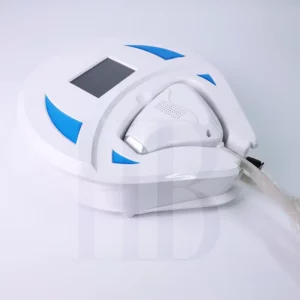
ViQure EpiPro for Salon & Home Use
BEST AT-HOME LASER HAIR REMOVAL DEVICE (OVERALL inc. DARK SKIN / BLONDE HAIR / FACE / BRAZILIAN)
Combines a high-energy 808nm diode laser with TEC cooling, making this more effective than any IPL device.
This unique hybrid machine is from a brand that caters to Medspas. This allows you to get virtually unlimited treatments from the same tech professionals use.
If you have the budget to invest, the ViQure EpiPro is the best at-home laser hair removal money can buy.
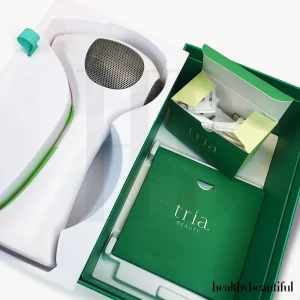
Tria 4x
MOST POWERFUL AT-HOME LASER HAIR REMOVAL
InStyle's 2020 & 2021 Best Beauty Buys Award is the first FDA-cleared diode laser hair removal device.
It has the highest energy power of any home use device at 7-22 J/cm² vs. the normal rate of 4-8 J/cm²
This means fewer sessions and a very high rate of achieving permanent results.
Cheat Sheet: The Most Powerful At-Home Laser Hair Removal Devices
Esthetician Tip: Save time by process of elimination. Compare by skin tone coverage, technology, power, safety (cooling), and other features.

| wdt_ID | Image | Device/Brand | Product | Max Energy Fluence | Skin Tone Coverage | I | II | III | IV | V | VI | Cooling/Pain-free |
|---|---|---|---|---|---|---|---|---|---|---|---|---|
| 1 | 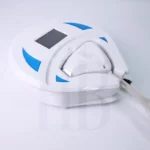 |
https://healthybeautiful.com/review/viqure-depimini-808nm-diode-laser-machine-in-depth-esthetician/ | ViQure EpiPro Diode Laser | 20.0 | I-VI | Y | Y | Y | Y | Y | Y | Advanced Thermoelectric Cooling + Wind Cooling (0°C~5°C) + Cooling gel |
| 2 | 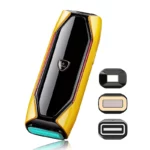 |
https://healthybeautiful.com/JOVS-X-3-in-1-IPL | JOVS X™ 3-in-1 IPL (OPT) | 7.0 | I-V | Y | Y | Y | Y | Y | Sapphire Cooling System | |
| 3 | 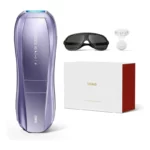 |
https://healthybeautiful.com/Ulike-Air-10 | Ulike Air 10 | 6.7 | I-IV | Y | Y | Y | Y | 65°F/18°C | ||
| 4 | 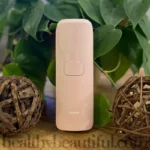 |
https://healthybeautiful.com/review/ulike-sapphire-air3-an-in-depth-review-by-estheticians/ | Ulike Sapphire Air3 | 6.3 | I-IV | Y | Y | Y | Y | Sapphire Cooling 10-20°C (50-68°F) | ||
| 5 | 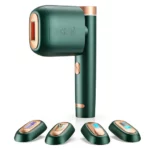 |
https://healthybeautiful.com/Bosidin-Pioneer-Pro-Official | BoSidin Pioneer-Pro (OPT) | 6.0 | I-V | Y | Y | Y | Y | Y | Dynamic Cooling Device (DCD) |
Esthetician's Choice:
The Best At-Home IPL & Laser Hair Removal Devices
Our estheticians and laser technicians have tested and reviewed the best-selling at-home laser hair removal devices on the market today.
Our top choices are the ones that are cut above the rest in terms of technology used, product quality, performance, ease of use, value for money, and our personal experience with using the device. To see all the devices we've reviewed, click here.
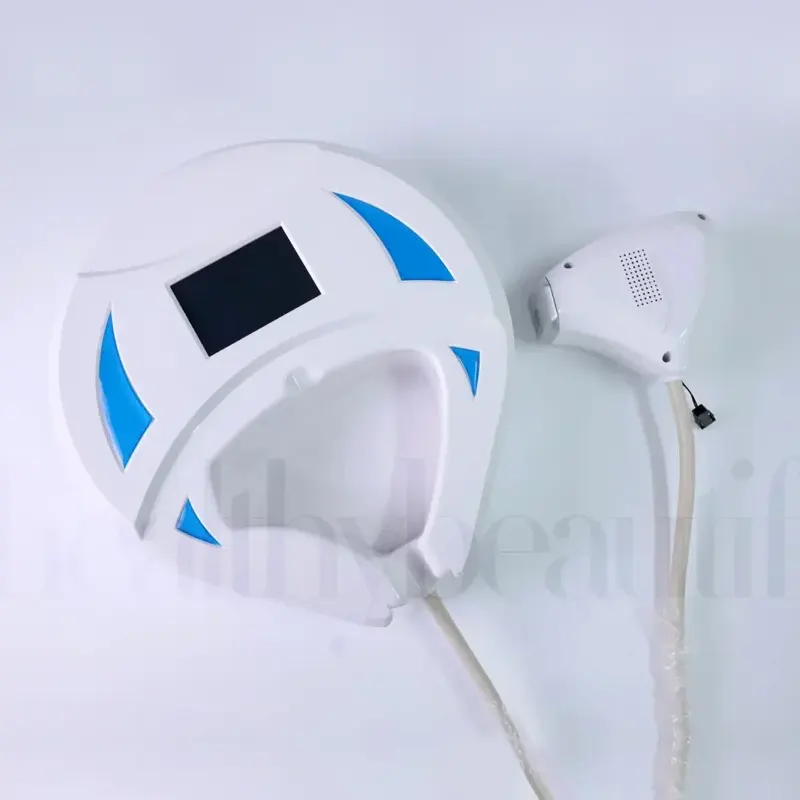
ViQure EpiPro
BEST AT-HOME LASER HAIR REMOVAL DEVICE (OVERALL inc. DARK SKIN / BLONDE HAIR / FACE / BRAZILIAN)
The Bottom Line:
Unlike most at-home devices, the ViQure EpiPro operates with a diode laser instead of IPL.
Diode is one of the only four lasers used by physicians in professional laser hair removal. (The other lasers are Ruby, Alexandrite, and Nd:YAG. No portable versions of these other lasers are available at this time. IPL is not a laser; it is light technology.)
The use of a medical-grade diode laser over IPL already makes the ViQure EpiPro inherently superior to almost all at-home devices.[2]
Add to that, this device was built for commercial use.
That means it brings all the advantages of a commercial machine like power, durability, flexibility, and efficacy to a device that's portable and simple to use.
It also surpasses all IPL limitations on skin tone, hair color, and body parts.
As an added bonus, it also doubles as a skin rejuvenation device, which is one of the benefits of diode lasers.
The only downside is that while it's an affordable laser machine for salons, it's quite high priced for individual use.
Not as expensive as professional services but still an investment compared to regular IPL machines.
However, if you want the highest chance of permanent results at home, the ViQure EpiPro is hands down your best bet.
Ideal for: All skin types, All body areas including between the eyebrows & Brazilian (No IPL device is FDA-approved safe for treating above the cheekbones & beyond bikini); Stubborn hair prone to re-growth with IPL, Multi-function device: Permanent Hair Reduction + Skin Rejuvenation
ViQure Coupon Codes
Get the best price with the latest premium promo and discount codes when you buy the ViQure EpiPro online. Sales and special gifts are limited-time offers.

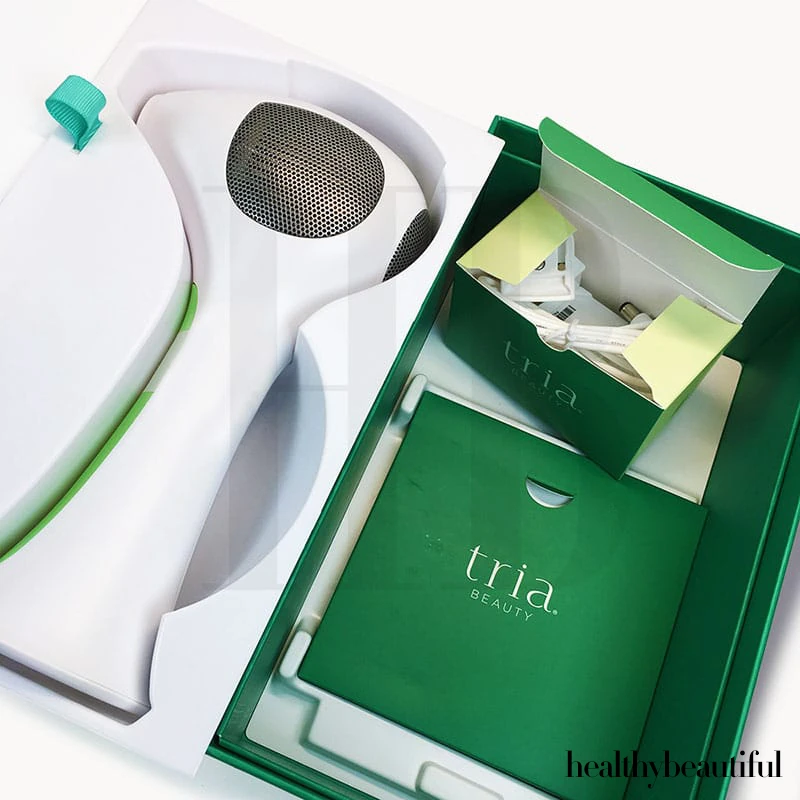
Winner: InStyle's 2020 & 2021 Best Beauty Buys Award
The Bottom Line:
This device is the closest you can get to medical-grade in terms of power and technology.
The Tria is one of only two consumer devices able to use a diode laser and one of the only four lasers used by physicians in professional laser hair removal. (The other lasers are Ruby, Alexandrite, and Nd:YAG. No portable versions of these are available as of this year. IPL is not laser; it is light technology.)
If you want the highest chance of getting permanent results at home, the diode laser is far ahead of the pack.[2]
The Tria 4x, however, is only safe to use on light skin and dark hair.
And, unlike the ViQure EpiPro, it doesn’t have cooling. This means it can be very painful to use.
Another issue is its tiny flash window. This feature makes it great for the face but time-consuming in large areas like the legsand arms.
In the end, if you want the strongest at-home laser hair removal device, nothing compares to the Tria. However, it’s lagging in terms of comfort and efficiency.
We’ve explored the pros and cons in detail in our extensive review if you’re interested in a deep dive.
Tria 4x Coupon Codes
Get the best price with the latest premium promo and discount codes when you buy the Tria laser 4x online.
Tria hair removal sales and special gifts are limited-time offers.

Tria Beauty UK
OFFICIAL WEBSITE
Free shipping on all domestic orders above £50. Paypal payment plans available. 60-day money-back guarantee. 2-year warranty.*
+ Get the Best Prices Online
*at the time of publishing. Subject to change. *can't see codes? They might be disabled by Adblockers.
Everything You Need To Know: Power/Energy in At-Home Laser Hair Removal
Energy Fluence Explained
Understanding the concept of energy fluence is crucial when choosing and using an IPL or laser hair removal device.
What is Energy Fluence?
Energy fluence refers to the amount of energy delivered per unit area of skin during each pulse of light, measured in Joules per square centimeter (J/cm²). It's a key determinant of how effective and safe a treatment will be.
The Role of Energy Fluence in Hair Removal
In IPL and laser hair removal, the goal is to deliver enough energy to the hair follicle to damage it and inhibit hair growth, without causing unnecessary damage to the surrounding skin. The energy fluence must be carefully calibrated to achieve this balance.
Adjusting Energy Fluence
Many IPL and laser devices come with adjustable energy fluence settings. It's important to use these settings correctly to ensure the treatment is both safe and effective.
Remember, while at-home IPL and laser devices are designed to be safe for personal use, they should still be used with caution.
Always read and follow the manufacturer's instructions carefully.
Don't hesitate to seek professional advice or leave a comment below if you're unsure about anything. Our staff would be happy to assist.
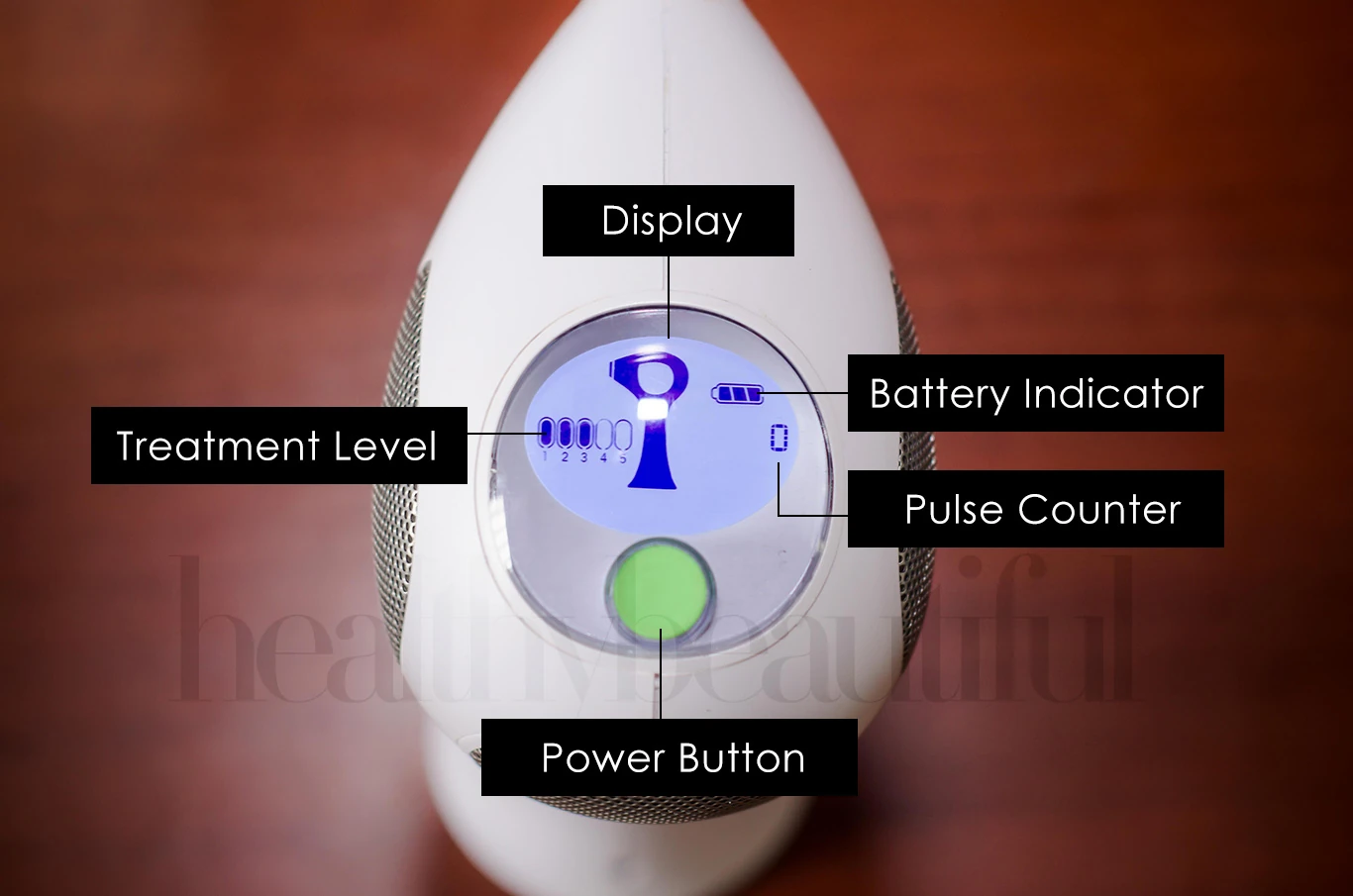
Safety Considerations
While higher energy fluence levels can lead to more efficient hair removal by effectively targeting hair follicles, excessive energy fluence can increase the risk of adverse effects.
Energy fluence that's too high for your skin tone can lead to side effects such as burns, blisters, hyperpigmentation (darkening of the skin), or hypopigmentation (lightening of the skin). On the other hand, using a device with an energy fluence that's too low may not yield the desired results.
Therefore, it's crucial to choose a device with an appropriate energy fluence for your skin and hair type.
Always start with the lowest setting and gradually increase as needed, keeping a close eye on your skin's reaction. If you notice any discomfort, redness, or other adverse reactions, stop the treatment and consult with a professional.
J vs. J/cm²: Why the Difference Matters
When researching IPL and laser hair removal devices, you may come across two different units of measurement: Joules (J) and Joules per square centimeter (J/cm²).
It's crucial to understand the difference between these two units, as failing to do so can lead to misleading information and potentially unsafe or ineffective treatments.
Joules (J) vs. Joules per square centimeter (J/cm²)
| Measurement | Definition | Description |
|---|---|---|
| Joules (J) | A unit of energy | Represents the total amount of energy delivered by the laser during a treatment session. It quantifies the overall energy output of the laser device. |
| Joules per square centimeter (J/cm²) | A unit of energy density | Determines the concentration of energy delivered to the skin surface. It calculates the amount of energy delivered per unit area. |
J/cm² is a more accurate indicator of treatment effectiveness and safety, as it determines the intensity of the light or laser beam on the skin.
Some Brands Use Joules (J) instead of (J/cm²)
Some brands advertise energy output in Joules (J) rather than Joules per square centimeter (J/cm²).
This can be very misleading.
A device with a high energy output in Joules (J) may sound impressive, but if the treatment window is large, the energy fluence density (J/cm²) may actually be quite low.
Conversely, a device with a lower energy output in Joules (J) but a smaller treatment window could provide a higher energy fluence density (J/cm²).
Without considering treatment area size, total energy output (Joules) alone doesn't accurately depict treatment intensity or effectiveness.
This lack of context may lead to inaccurate expectations and suboptimal results.
Using only the energy fluence (J) value can be misleading because a higher total energy output does not necessarily translate to more effective hair removal if the treatment area is larger.
For example, a device with a higher energy fluence of 10J but a larger spot size may be less effective than a device with a lower energy fluence of 8J but a smaller spot size, resulting in a higher energy fluence density (J/cm²).
How to Avoid Misleading Information
To ensure you're getting accurate information, always look for devices that provide their energy fluence density in Joules per square centimeter (J/cm²). This will give you a clearer picture of the device's effectiveness and safety.
Moreover, don't be afraid to reach out to brands and ask for clarification if their devices' energy output is only listed in Joules (J). A reputable brand should be transparent about their device's energy fluence density and willing to provide this information.
In the next section, we'll discuss how to choose the right energy fluence density for your skin and hair type to ensure optimal results.
Some brands may intentionally or unintentionally omit the energy fluence density information, which can be misleading for consumers.
By understanding these nuances, users can make more informed decisions and avoid potential safety risks or ineffective treatments due to incomplete or misleading energy fluence information.
If you need help in understanding any particular, feel free to leave a comment below and one of our staff can answer any questions you may have.
Choosing the Right Energy Fluence
Choosing the appropriate energy fluence level is crucial for safe and effective at-home IPL or laser hair removal.
The energy fluence determines the intensity of the light or laser beam delivered to the treatment area, directly impacting the hair removal efficacy and potential side effects.
Factors to Consider
- Skin and Hair Type Compatibility – Tailor the energy fluence to your unique skin and hair characteristics.
- Light skin with dark hair. The ideal combination. Lighter skin can typically take on higher energy fluence levels as they don't absorb as much IPL/laser. The contrast in skin-hair melanin also allows for better targeting.
- Dark skin with dark hair. Regular IPL devices can't distinguish between melanin in the hair and skin. You need machines with special engineering or lower energy fluence levels to minimize the risk of adverse reactions.
- Light skin with light hair. The lighter the hair, the less melanin there is, and the less effective IPL/laser hair removal will be. If you have some shade and want to maximize your home device, you can turn up the energy level as high as your skin can tolerate. This can hurt or you can burn yourself, so be careful and patch test a small area first before going all in.
- Hair Color and Thickness – Coarser, darker hair may necessitate higher energy fluence for effective targeting, whereas finer or lighter hair may require lower energy settings for optimal results.
- Sensitivity and Tolerance -If you have sensitive skin, opt for IPL/laser devices with cooling or adjustable energy fluence settings, allowing for customization based on comfort levels. Conducting a patch test beforehand can help gauge your skin's reaction and determine the appropriate energy settings for comfortable and safe treatment.
Choosing the right energy fluence is critical for maximizing the effectiveness and safety of at-home IPL or laser hair removal treatments. By considering factors such as skin and hair type compatibility, sensitivity, and device specifications, you can tailor your treatments.
Tips for Choosing the Right Energy Fluence
- Start Low and Go Slow – Begin with lower energy fluence settings, especially if you're new to at-home IPL or laser treatments. Gradually increase the energy fluence as needed based on your skin's response and treatment efficacy.
- Conduct a Patch Test – Before proceeding with full treatment, perform a patch test on a small area of skin to assess your skin's sensitivity and tolerance to the selected energy fluence level. This helps prevent adverse reactions and ensures safe treatment.
- Consider Your Device Features – Choose an IPL or laser device with adjustable energy settings to accommodate different treatment areas and hair types. Look for devices with built-in safety features such as skin tone sensors and cooling mechanisms to enhance treatment safety and effectiveness.
- Monitor Treatment Progress – Regularly assess your skin's response to treatment and adjust the energy fluence as needed. Pay attention to any signs of discomfort, irritation, or adverse effects, and consult with a professional if you have any concerns.
- Hair Growth Cycle – Different hair growth phases (anagen, catagen, telogen) may respond differently to various energy fluence levels, so adjustments may be necessary over multiple treatment sessions.
- Be Patient and Consistent – Achieving desired results with at-home IPL or laser hair removal takes time and consistency. Stick to a regular treatment schedule and follow recommended guidelines for optimal outcomes.
- Follow the Manufacturer's Instructions – They can provide specific guidance on choosing the right energy fluence setting based on your skin and hair type.
Remember, while at-home devices are designed to be safe and effective, they should still be used with caution. Always perform a patch test before starting a full treatment, and stop using the device if you notice any adverse reactions.
Safety should always be the top priority when using at-home IPL or laser hair removal devices. Adhering to the recommended energy fluence levels and following proper usage instructions are crucial for achieving the desired results while protecting your skin.
By following these tips and considering key factors, you can confidently choose the right energy fluence for effective and safe at-home IPL or laser hair removal treatments.
IPL vs. Laser: The Difference in Technology
Choosing between IPL (Intense Pulsed Light) and Laser for hair removal is a crucial decision that can impact the effectiveness and safety of your treatment. Understanding the key differences between these two technologies is essential to making an informed choice that aligns with your specific needs and preferences.

IPL (Intense Pulsed Light)
In simple terms, IPL, or Intense Pulsed Light, is a technology that uses a broad spectrum of light to target hair follicles. Think of it as a versatile flashlight emitting various wavelengths, effectively treating a range of skin concerns, including hair removal.
Laser
Laser, on the other hand, stands for Light Amplification by Stimulated Emission of Radiation. In layman's language, laser hair removal utilizes focused and concentrated beams of light at a specific wavelength. It's like using a precision laser beam to target individual hair follicles with high accuracy.
Comparison Table: At-Home IPL vs At-Home Laser Hair Removal Devices
| IPL | Laser | |
|---|---|---|
| Hair Removing Mechanism | Intense Pulsed Light | Focused laser light at a specific wavelength |
| Engineering in Devices | Uses flash lamps to emit broad-spectrum light | Brands with proprietary diode laser technology |
| Pros | Versatile, can treat multiple issues; Less expensive than laser | With higher energy can have longer-lasting results & more effective with precision targeting; Requires fewer sessions than IPL |
| Cons | Requires more sessions & frequent touch-ups; Weaker energy & may be less effective | More expensive than IPL; Needs cooling for higher energy & more painful; Needs laser safety glasses |
| Skin Compatibility | May not be as effective on lighter hair or darker skin tones beyond Fitzpatrick IV-V+ (depends on the device) | Can be more effective on darker skin and lighter hair (depends on the device) |
| Hair Color Compatibility | More effective on darker & coarser the hair | More effective on darker & coarser the hair |
| Effectiveness | Effectiveness varies widely depending on the device specs, skin type, & hair color but generally best for light skin & coarse, dark hair | More effective with precision targeting but still depends on energy used, skin type, & hair color |
| Treatment Areas | For ALL IPL devices: No FDA approval above the cheekbones to prevent eye damage; Up to bikini only, no Brazilian to prevent burns. | Depends on the device specs: All to some body areas, including between the eyebrows and Brazilian |
| Treatment Time & Frequency | Varies depending on energy used, speed and treatment area, but generally takes longer and more effort to see results | Varies depending on energy used, speed and treatment area, but generally takes less time and sessions than IPL to see results |
| Discomfort | Typically well-tolerated due to low energy | Needs cooling if high energy used, or may cause discomfort or pain during treatments |
| Safety | Safe for at-home use when used according to manufacturer instructions; May cause skin irritation or burns if not used properly. IPL glasses can be used for additional safety. | Safe for at-home use when used according to manufacturer instructions; May cause skin irritation or burns if not used properly. Need laser glasses for eye safety. |
| Typical Cost Range | Varies depending on the brand & features, but generally less expensive because IPL lamps & casings are cheaper to produce. Decent ones range between $200 - $500. | Varies depending on the brand & features, but proprietary laser tech is more expensive at $500 - $1000+ |
Both IPL and laser hair removal are effective methods for reducing unwanted hair.
However, IPL is generally less expensive and has lower energy capabilities, while laser hair removal is more expensive but can have higher energy, is more precise, and requires fewer sessions.
Ultimately, the best choice depends on individual factors such as skin type, hair color, your budget, and your treatment goals.
FAQs
References:
- Durmuş, H. O., Arı, E. Ç., Karaböce, B., & Seyidov, M. Y. (2020). Measurements of temperature and optical power caused by an IPL therapy device on an artificial tissue. Results in Optics, 1, 100001.
- Town, G., Ash, C., Eadie, E., & Moseley, H. (2007). Measuring key parameters of intense pulsed light (IPL) devices. Journal of Cosmetic and Laser Therapy, 9(3), 148-160.
- Stangl, S., Hadshiew, I., & Kimmig, W. (2008). Side effects and complications using intense pulsed light (IPL) sources. Medical laser application, 23(1), 15-20.
- Haedersdal, M., Beerwerth, F., & Nash, J. F. (2011). Laser and intense pulsed light hair removal technologies: from professional to home use.British Journal of Dermatology, 165(s3), 31-36.

